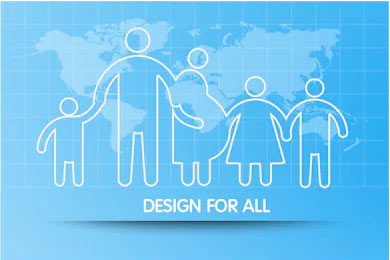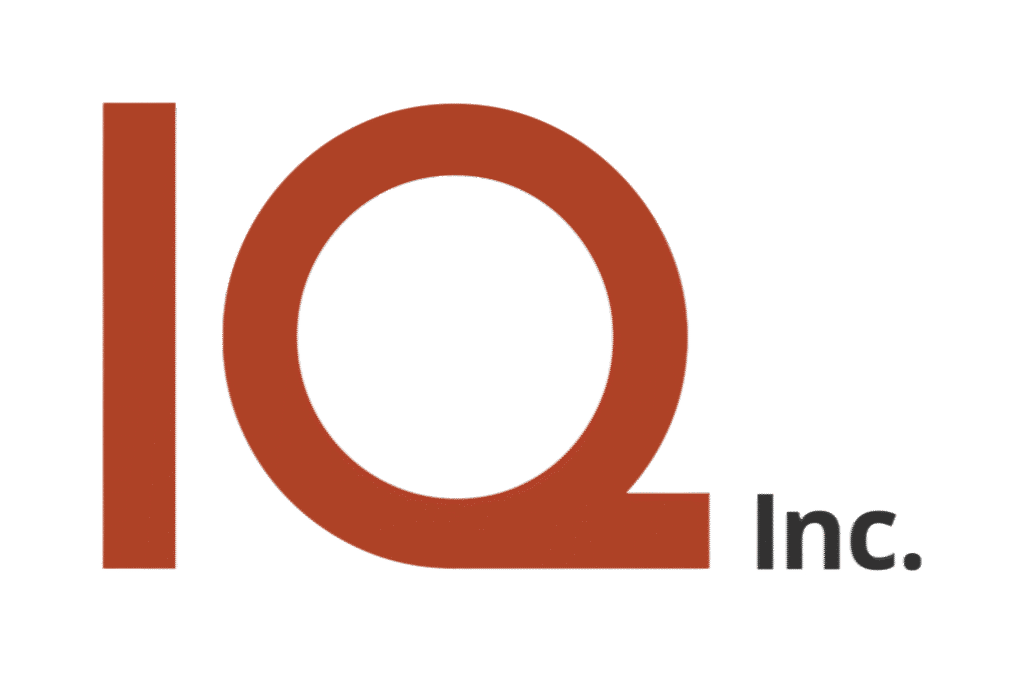Welcome to the seventh article in our user experience series. In our previous post, we discussed the importance of usability testing and some techniques for running a successful usability test.
In this post, we will learn why and how to design inclusive and accessible products.
In case you missed them, you can find the other articles in our user experience series below:
- http://iq-inc.com/why-ux-is-important
- http://iq-inc.com/how-to-conduct-user-research
- http://iq-inc.com/writing-meaningful-user-stories
- http://iq-inc.com/typography-in-ui-ux-design
- http://iq-inc.com/ideation-and-interactive-prototypes
- http://iq-inc.com/usability-testing
Why Accessibility Matters
It is common for designers and engineers to overlook the accessibility of the system during the design and development process. It is natural to imagine that a product would only be used by people who look like us, think like us, and have all the same functions as us. As mentioned in our second post, you are not the user.
A few years ago, I had the opportunity to hear the experience of a blind PhD candidate at a major public university in the United States share about how difficult it was for him to fill out the online application form for a graduate program. He struggled through the application process and at one point remarked: “it was as if the university was saying to me, ‘if you are blind, don’t bother applying.’”
Accessibility matters because people who have disabilities or impairments also deserve to be able to use a system. By designing with accessibility in mind, we make our product much more usable to an oft-neglected yet sizeable segment of the population. Statistics show that in the US alone nearly 60 million people have some sort of disability ranging from mild to severe. These people are no longer “the minority” but may make up a large chunk of a user base. It matters to them that our products are usable for everyone.
Accessibility also matters because designing for accessibility benefits everyone. Ramps, automatic doors, closed captioning, and AssistiveTouch are just a few examples of accessible design that everyone can benefit from.
Accessibility makes our products more usable to more people.
Universal Design

Universal design is a design philosophy in which the design of a product or system is made such that it is accessible to all people regardless of age, impairments, or other factors. Such considerations are built into the initial designs and visions for the product and not an afterthought.
A working group at The Center of Universal Design at North Carolina State University defines universal design as “the design of products and environments to be usable by all people, to the greatest extent possible, without the need for adaptation or specialized design.” (The Center for Universal Design, 1997)
They have introduced seven principles of universal design to be aware of:
- Equitable Use – If at all possible, the design should be able to be used in the same manner to avoid segregating users. It should be useful and appealing to all groups of people.
- Flexibility in Use – The design accommodates a wide range of individual preferences and abilities. It allows choices in methods of use (e.g. right-handedness or left-handedness).
- Simple and Intuitive Use – The design accommodates a wide range of individual preferences and abilities. It allows choices in methods of use (e.g. right-handedness or left-handedness).
- Perceptible Information – The design communicates necessary information effectively to the user, regardless of ambient conditions or the user’s sensory abilities (e.g. use of multiple modes of redundant information presentation).
- Tolerance for Error – The design minimizes hazards and the adverse consequences of accidental or unintended actions. It provides warnings, fail-safes, and discourages unconscious actions.
- Low Physical Effort – The design can be used efficiently and comfortably and with a minimum of fatigue. It allows the user to maintain a neutral body position and minimizes repetitive actions and sustained effort.
- Size and Space for Approach and Use – Appropriate size and space is provided for approach, reach, manipulation, and use regardless of the user’s body size, posture, or mobility.
Types of Disabilities
A. Visual
Visual disabilities include various forms of blindness, low or blurry vision, and color blindness. Be conscious of the colors used throughout the product. Use several modes to convey meaning (e.g. color, shapes, text, icon, tactile) and aim for good color contrasts. Assume that font-size can be variable and ensure that the application can gracefully handle those changes.
Certain individuals may rely on the use of a screen reader to consume and input content so include alternative text in any HTML image tags, transcripts for videos, and allow for navigation by keyboard only.
Finally, avoid using placeholder text as labels for form input fields1.
B. Motor
Motor disabilities are weaknesses and limitations in motor control which include tremors, arthritis, repetitive stress injuries, paralysis, or amputation. Therefore, ensure that any clickable items such as buttons or input fields are large and given enough space2. Design the system such that it can be navigated via keyboard and/or voice control. Finally, if the product is a mobile application, consider how it would be used in that form factor as well
C. Auditory
Auditory disabilities include hard of hearing or deafness in one or both ears. Therefore, use plain and simple language as text. This is because many people use sign language (e.g. American Sign Language or British Sign Language) as their first language and English is often considered their second language. Be sure to keep sentences short with a logical, clear flow. Avoid forcing users to read long blocks of text. Finally, include subtitles or transcripts for any audio or videos used.
There are many other disabilities out there to consider but hopefully, the list above gives a good starting point for considering how many of these issues can be practically considered and addressed in a product.
As developers, designers, and managers, it is our job to champion accessibility. By doing so, we make our products more usable to more people, regardless of age, abilities, education, or geographic location.
1: Placeholders in Form Fields Are Harmful: https://www.interaction-design.org/literature/article/fitts-s-law-the-importance-of-size-and-distance-in-ui-design
2: Fitt’s Law: https://www.interaction-design.org/literature/article/fitts-s-law-the-importance-of-size-and-distance-in-ui-design
For more information about universal design and accessibility, we recommend reading:
- https://www.interactiveaccessibility.com/accessibility-statistics
- https://projects.ncsu.edu/ncsu/design/cud/about_ud/udprinciplestext.htm
- https://accessibility.blog.gov.uk/2016/09/02/dos-and-donts-on-designing-for-accessibility
Author: Sam Cheng

